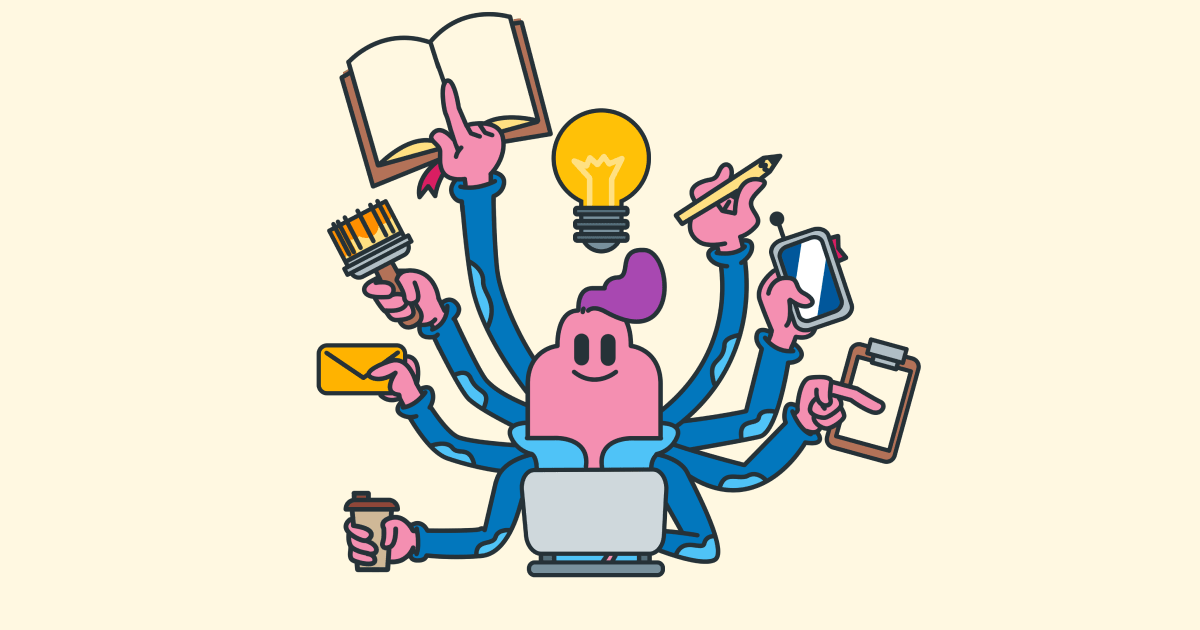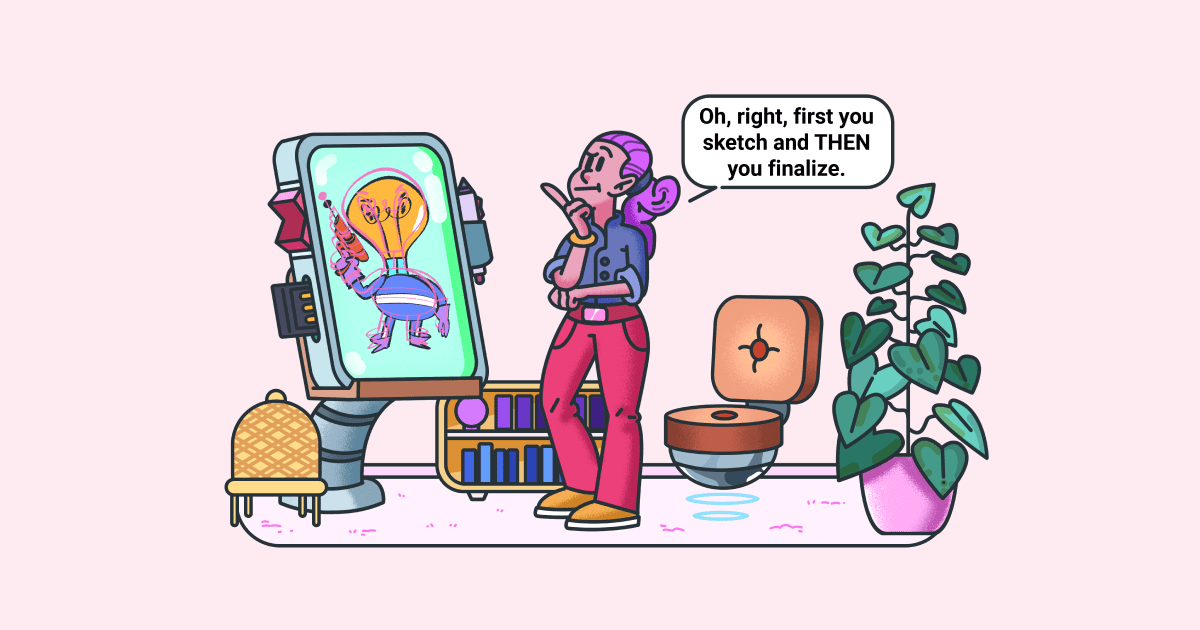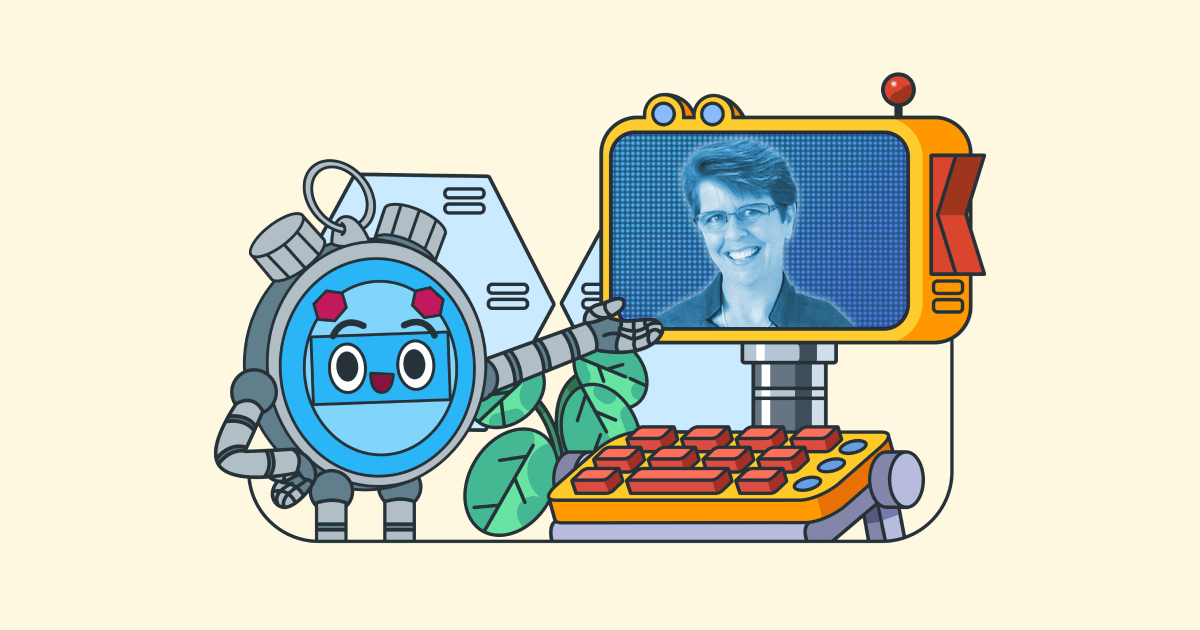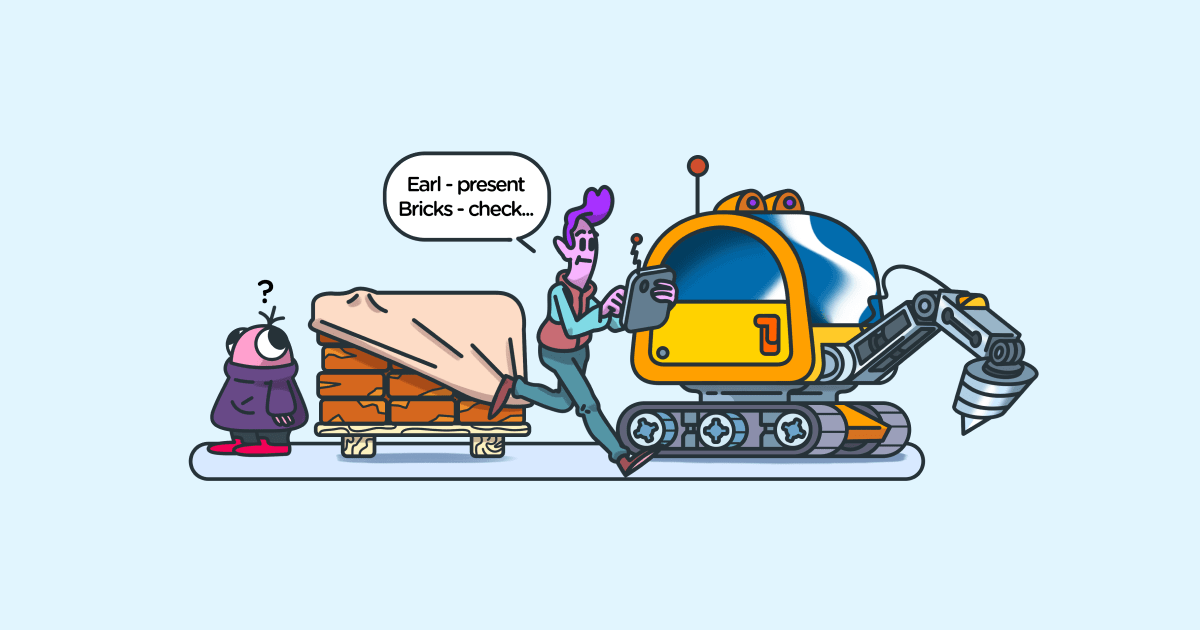How to organize yourself and your time as a freelancer
Last updated on: March 1, 2023
Freelancing is more than just neatly ordering your daily schedule, having your contacts and resources in check, being super productive, and starting off your day at 8 AM. Knowing how to organize yourself as a freelancer is also learning to grasp your time and resources as tools to become prolific and content with this lifestyle.
In this article, we’ll discuss how to address the three big factors in every freelancer’s life: time, resources, and the mind. Once you’re familiar with all three, you’ll have an easier time forming your own schedule. You might even find new things you didn’t know needed to be addressed in your own daily workflow.
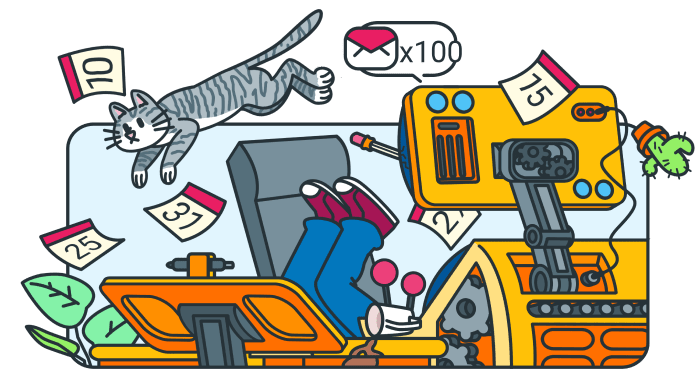
Table of Contents
Organize your time to stay on top of everything
Naturally, we’ll first want to find out how to organize our time.
Because time is always of the essence, and we need more of it, right? Following are some tips on how to better organize your day.
Track your time to find the time sinks
At the core of time organization is discipline.
Sticking to a schedule is one of the toughest habits to pick up because we tend to get sidetracked. Whether it’s procrastination due to our monkey brain or outside factors like kids, caring for loved ones, errands, and so on.
This is why, as tedious as it may seem, we need to start tracking our time. Even before constructing your schedule, spend a week taking note of every activity you spend time on. Track even your most common distractors, such as Facebook or Instagram, chatting with friends and coworkers, or just your attention drifting off.
Once you are able to add up that time at the end of the day, you’ll have a clearer idea of how to avoid making those mistakes. As a result, your schedule will be more organized and purposeful.
The important thing is to stick to a schedule
We all work in different ways. Some people function better in the morning, while others may reach their peak hours only in the evening.
So, it’s crucial to know when you are the most productive to make the best schedule for yourself.
Otherwise, you’re blindly organizing your time. Important tasks could fall in time slots when your energy is lower, while trivial ones get the peak hours. Soon enough, you fall behind and stare down the barrel of long work hours and overtime.
The important thing is to know that this doesn’t mean you need to start your workday at 8 AM. Starting at 11 AM is just as valid. It doesn’t work the same for everyone.
It’s the structure that matters.
Organize your long-term goals, then work towards smaller ones
Your organization skills will improve drastically if you try to plan out the months ahead, then weeks, and then switch to daily tasks.
And here’s why.
Set your long-term goals
A freelancer friend once gave me great food for thought: set aside the time to plan out your long-term goals. Especially if freelancing is your full-time job.
And by that, he didn’t mean “finish project A in two weeks”. It was more about asking the questions:
Where do I want to be in two months?
How many new clients do I want to acquire within the next six months?
How can I get into a freelancing community?
Your roadmap could look like this:
| Goal | Timeframe | Method |
| Where do I want to be? | 2 months | Figure out what kind of work I want to be doing; Consider online classes to brush up on skills. |
| How many new clients do I want to acquire? | within 6 months | Research through linked-in Ask other freelancers for connections |
| How can I get into a freelancing community? | this year | Month 1 – look for coworking spaces Month 2 – sign up for newsletters Month 3 – reach out for collaborations |
Picturing your freelancing career months or even years down the line will give you a solid framework. You lay out a path for yourself, and knowing which direction you’re taking makes all your scheduling and resource choices more purposeful.
Set your short-term goals
Going by the table above, it becomes clearer how you can schedule out your weeks and days. You won’t be simply working day-to-day on short-term goals, but have something specific to work towards.
Deadlines become tighter and make more sense. Besides you get to stress less about the small things, as you will always have the bigger picture in mind.
Plan out your work hours
There are several ways to approach your work hours. And as we’ve mentioned, they’ll differ from person to person.
Here’s how freelancers normally organize their work hours:
- Working in two-three chunks throughout the day, with longer breaks for errands or leisure time in between.
- Working in multiple, shorter chunks that expand throughout the day (whether it’s because of personal life conflicts or client and collaborator timezones)
- Working in a single, 8-hour chunk as if it was a 9 to 5 office job.
All three methods are valid and it’s best to give a week for each of them to see which one suits you best.
💡 Want to see how other freelancers work? One of our articles explores how freelancers spend their time.
Organize your space and resources for maximum productivity
In the following section, we’ll discuss why you need to organize not only your workspace but other aspects of your personal life.
Getting a good grasp on schedules other than your work can give you the necessary practice to handle more obligations, or successfully juggle the ones you already have.
Learn how to automate some of your tasks
Looking for advice from freelancers themselves, I’ve delved into Reddit’s freelance community. And among a lot of useful tips concerning motivation, client, and project management, I found one that really stood out.
The freelancer in question mentioned how their chronic illness forced them to organize their resources so that the workflow never gets disrupted. They work very limited hours per week, so the schedule has to be airtight. And to be honest, it’s a schedule we can all learn from:
- I’ve automated an informative and useful welcome email series for new clients & automated my primary sales funnel
This is a particularly useful thing to automate because it relieves you from having to come up with a new greeting email every time. You can also set your inbox to sort emails upon arrival into appropriate categories.
- I’ve made repeatable work processes, workbooks, worksheets, and workshops to make it easier for my client to provide content & info I need from them. I only have to grab whatever I need from this arsenal.
Instead of having a long email correspondence with the client, simply letting them fill out a form saves a lot of time for both sides.
- I have a coach for when I feel stuck & don’t know why
Productivity coaches have only grown in popularity. We’re slowly starting to accept that not all of us have great discipline, are able to learn and apply it, or get out of professional ruts on our own. So, having a coach to guide you out of an organizational issue once you’ve depleted all resources is a great choice.
- I’ve got a small network of other small business owners doing work adjacent to mine. I advise clients to work with these wonderful co-creators as well. With others, I have partnerships in which we provide full services and basically ‘split the bill’.
- I exchange services with these businesses, for example providing me with a ‘free’ bookkeeper in exchange for me providing them my service(s).
A really good way to establish meaningful connections and offload work that could do more harm than good to your productivity. Additionally, you are able to afford services that otherwise would have been out of your price range.

💡 If you want more information on how resource management can get you to earn more, here are some useful links:
Practice organization through other areas of your life
It’s difficult to maintain a well-organized career if other aspects of your life are slipping through your fingers.
Now, this doesn’t mean you should be an organizational powerhouse. It’s more about mindfully organizing other things in your life to get enough “practice” in.
- For example, start sorting and storing important documents (if you’re not already), like medical and financial reports, important mail, contracts, etc. This will help you get used to compartmentalizing.
- Set aside one day a week to plan out your meals – on what days you will cook, when you will order in, and when you do the grocery shopping. Just think of all the saved time and stress because you will have your meals planned out. One of the worst things is realizing you have a task to finish, but you’re hungry, it’s lunchtime, and you either have to set aside the time to cook, waste time browsing restaurants, or eat whatever snacks you have to stave off hunger.
- Schedule regular house cleaning hours. Even if there are three dishes in the sink – wash them. Sort things on your shelves, clean out the desk, toss out anything you’re not using anymore.
The more you go through the physical motions of sorting and organizing, the easier it will be to do the same for your work-related files and processes (project documentation, expense reports, invoices, managing tasks, and deadlines, etc).
Achieve mental balance through organizing your mind
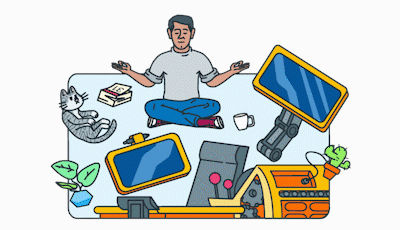
While we have discussed how organization is all about creating that “muscle memory” through practice, it’s all pointless unless we’re mindful about it. No amount of scheduling tasks in a day or a week will be enough if we don’t make our thoughts more organized.
Here we will talk about achieving peak focus and how it reflects on our schedule, how to be satisfied with tasks being done rather than perfect, and mindful practices to train our brain on becoming organized.
With these tips, you will be able to overcome any mental stress that comes with staying on top of things. Plus, it will help with the preparation and reorganizing when you run into obstacles.
Learn about the state of flow and practice it
Mihaly Csikszentmihalyi, a reputable Hungarian psychologist, was the first to coin the term “state of flow” and recognize it in the human mind. He noted it as the moment where an individual becomes so engrossed in their work that all outside distractions and matters become unimportant.
What does the state of flow look like?
- Complete and utter focus on the task at hand;
- Goals and rewards are clear, there is instant feedback;
- Perception of time is changed (you stop thinking about it – an hour can seem like ten minutes, or ten minutes feel like an hour);
- The work is effortless;
- You gain a feeling of complete control over the work;
- The tasks are challenging just enough to make the effort fun;
- The process feels rewarding;
- All sense of self is gone (no stress, worries, distractions, etc).
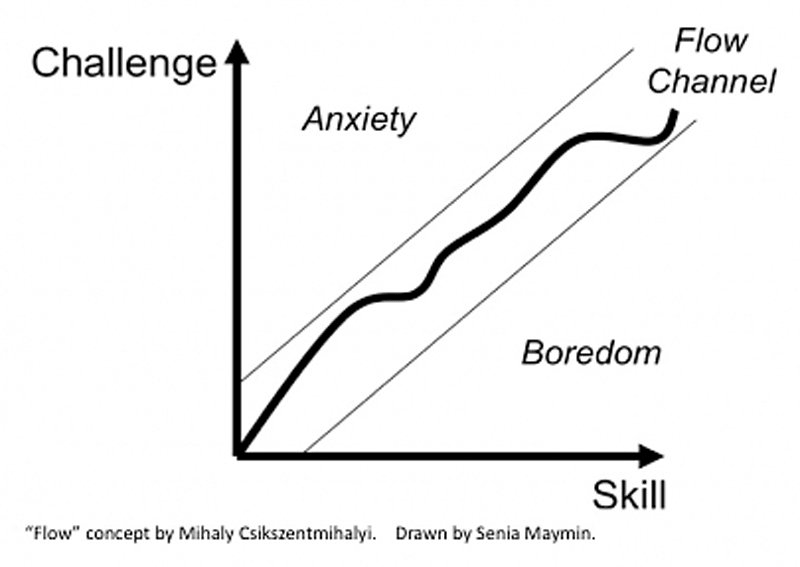
How to enter the state of flow?
Dr. Travis Bradberry, author of Emotional Intelligence 2.0 cited numerous studies that show how our brains need time to become fully immersed in a task. So, it’s pointless to stress over not getting into the groove immediately.
Especially if we find the task tedious or just dislike it.
To enter a potential state of Flow, Bradberry advises sticking to it for twenty minutes. Persisting for that time increases your chances of reaching it. This brings us back to not humoring our monkey brain which wants us to flee because we don’t like the work.
Sometimes, we need to parent our minds and be strict about it.
Work on getting things done rather than having them perfect
Finishing a task is much more useful than droning at it until it’s perfect.
If you struggle with starting something because you’re afraid of making mistakes or having very poor-quality first attempts, try to focus on starting the work anyway.
Erik Fisher has a great podcast episode on this topic, with Jon Acuff. They discuss simply beginning to work, no matter how bad we think the start is going to be. Put bad ideas on paper, brainstorm, and let out as many half-assed drafts as you can. It’s the only way to finish tasks quicker AND reach that perfect result.
Diversify your daily tasks
This one is a personal struggle I face from time to time.
At my previous jobs, I’ve learned that I thrive the more tasks I have throughout the day.
Especially the more diverse they are. I used to work in game design, so my day would consist of:
- checking in with other team members since our tasks were interdependent;
- doing QA on game builds;
- writing the game design document;
- discuss changes, deadlines, and possible hold-ups with the producer;
- taking notes during meetings and writing out team tasks after them;
And much more, depending on how far off we were with production.
However, now as a writer, my day comes down to tasks relating to writing one or two articles.
And if all I have to do is write an article, I’ll quickly start to procrastinate, since my brain keeps doing the same tasks over and over. And so, I’ve learned to give myself different types of tasks to keep the day dynamic.
- I research potential new topics and write down resources;
- I talk to other writers to exchange ideas and get feedback;
- I brainstorm with my SEO coworker about new approaches to content;
- I suggest new ideas to our team lead and ask for diverse tasks;
- I ask around with coworkers about their work and try to learn here and there;
It satisfies an itch for diverse tasks and keeps my schedule dynamic enough to keep me productive.
If you have trouble focusing, like myself, then look for alternative activities to fill up your time – free online classes, listening to podcasts and taking notes, signing up for workshops, etc.
Refrain from multitasking as much as you can
We’ve discussed multitasking in several articles already, so I won’t be droning on about it here as well.
The core idea is to keep your focus on a single task at a time. Studies have shown that our concentration drops the moment we switch from one task to another. This phenomenon is called context switching.
What’s interesting is that, if we keep the Flow in mind, and how it takes 20 minutes to concentrate fully, it’s easier to understand why multitasking is bad for you. Your whole schedule could be thrown off, causing delays, stress, and guilt.

Practice organizing your thoughts
Nathanial Drew made an interesting video on how to organize your thoughts better.
While he mainly focuses on the effect it has on the creative process, the ideas work just as well no matter what field you’re in.
- Keep freeing up space in your head
Like Drew says: “there’s a ton of crap there”. We’re overstimulated all the time. Sometimes, we can’t even focus on a 10-minute video. So, to be able to organize our thoughts, we need to clear out the short-term memory as often as we can.
This is best done by writing things down instead of memorizing “for later”. Like emails, place names, people to contact, making appointments, and so on. Doing this lets your brain refocus on long-term memory and proper information processing.
- Treat your ideas like a wine-maker
Drew uses this metaphor to illustrate how, to follow through with an idea, you have to test out and sacrifice every single one that comes into your head. Just like you test grapes in a vineyard. Some ideas will seem great, but not give the best end result.
When you’re wanting to become more organized, there are so many resources. Just to tackle daily tasks, you can choose between the Eisenhower matrix, “eating the frog”, time blocking and the Pareto principle, to name a few. But to know which one works best, you have to try them. Maybe the best method for you turns out to be the one you didn’t even consider!
- Discuss your methods with others
Exchange ideas, ask for feedback, and others’ experiences. While trial and error are inevitable, sometimes you can avoid mistakes by learning from others. Talk to friends, family, other professionals you know, or post online. Get your ideas and experiences out there.
Relish in making mistakes
One thing I strongly advocate for when writing articles like these is to embrace failures. It’s something I struggle with as well, and in a way, I may be repeating this advice to keep myself in check.
Like we said earlier, you won’t be perfect from the get-go. There will be scheduling mistakes, you will get distracted, your resources and documents will be a mess, you’ll misplace things/contacts, you’ll let your desk get disorganized or work longer hours for days at a time. Time management will be a mess every once in a while.
Mainstream media enforces this idea that getting organized and on top of your career is as easy as following some YouTube tutorials. So the pressure is immediately there. But the sooner you realize that mistakes will be made, and learn to forgive yourself, the quicker you’ll reach the best version of yourself.
Just keep in mind that you have to learn from your mistakes or else there’s no progress. You’ll be stuck in a career rut with a loop of failure and self-loathing.
Wrapping up
There are so many ways to organize yourself as a freelancer. As we’ve seen, perhaps the most important organization is in our perspective of the work ahead, our careers, and in our minds. To really get a handle on our time and schedule, there’s a lot of preparation and tweaking along the way.
Simply treat your organization skills as a constant learning opportunity. Change it as you see fit and learn from your past self.
